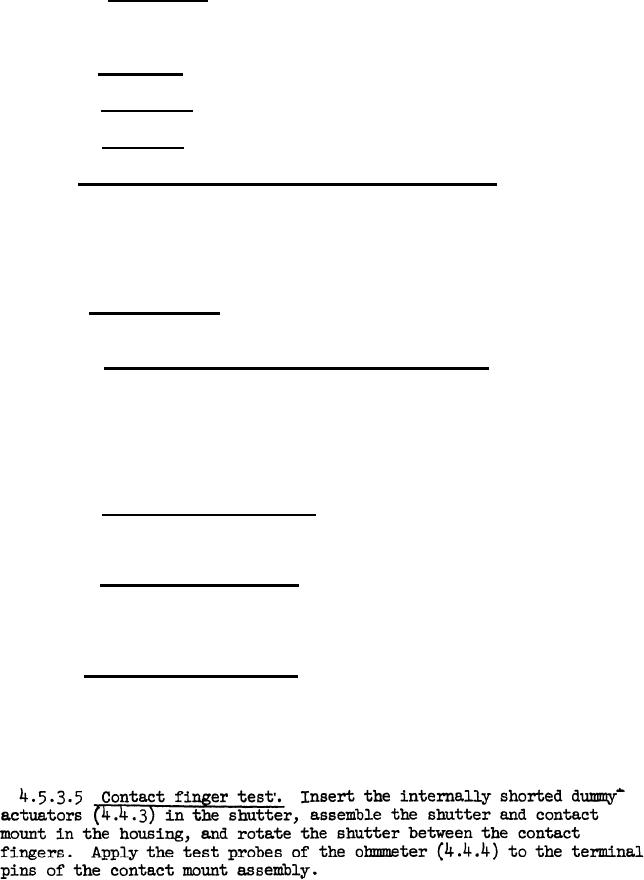 |
|||
|
|
|||
| ||||||||||
|
|  MIL-A-21001A(Wep)
40.5.1.1 Temperature:
Room ambient, plus 65 degrees F to plus 95
degrees F (plus 18.33 degrees C to plus 35.0
degrees C)
4.5.1.2 Altitude:
Normal ground
4.5.1.3 Vibration:
None
4.5.1.4 Humidity:
Room ambient to 95 percent relative (maximum)
4.5.2 Test and inspection equipment and facilities. The manufac-
turer shall furnish and maintain all necessary test equipment and
facilities and personnel for performing all acceptance tests. The
test equipment shall be adequate in quantity, and where definite
requirements are not specified, it shall be of sufficient accuracy and
quality to permit performance of the required acceptance tests.
4..5.3 Test procedure.
The acceptance tests shall be performed in
accordance with the following procedures:
4..5.3.1 Degree of cure of plastic components test. Conduct at least
one test for each batch of uncured resin and for each change in the
curing procedure. Select a sufficient number of sample upper contact
mounts and lower contact mounts to conduct an acetone extraction test
on each as prescribed in method No. 7021 of Federal Test Method
Standard No. 406. In cases where the extract exceeds 5 percent all
contact mounts represented by the sample shall be rejected.
4.5.3.2 Stitch securement test. Attach the spring scale (4.4.6)
to the two terminals of the switch and apply a pull of three pounds
minimum.
4.5.3.3 Switch operation test.
Using the spring scale (4.4.6),
"apply a force of four pounds maximum against the switch actuating face and
apply the test probes of the ohmmeter (4.4.4) to the terminals of the
switch .
4.5.3.4 Operating torque test. Insert two dummy actuators (4.4.1) in
the shutter and assemble the shutter and contact mount in the housing
without the safety spring. Attach a suitable torque indicating instru-
ment (4.4.2) to the operating shaft of the-shutter and apply a torque,
first in the arming direction and then in the disarming direction, until
the shutter comes to a full stop.
7
|
|
Privacy Statement - Press Release - Copyright Information. - Contact Us |